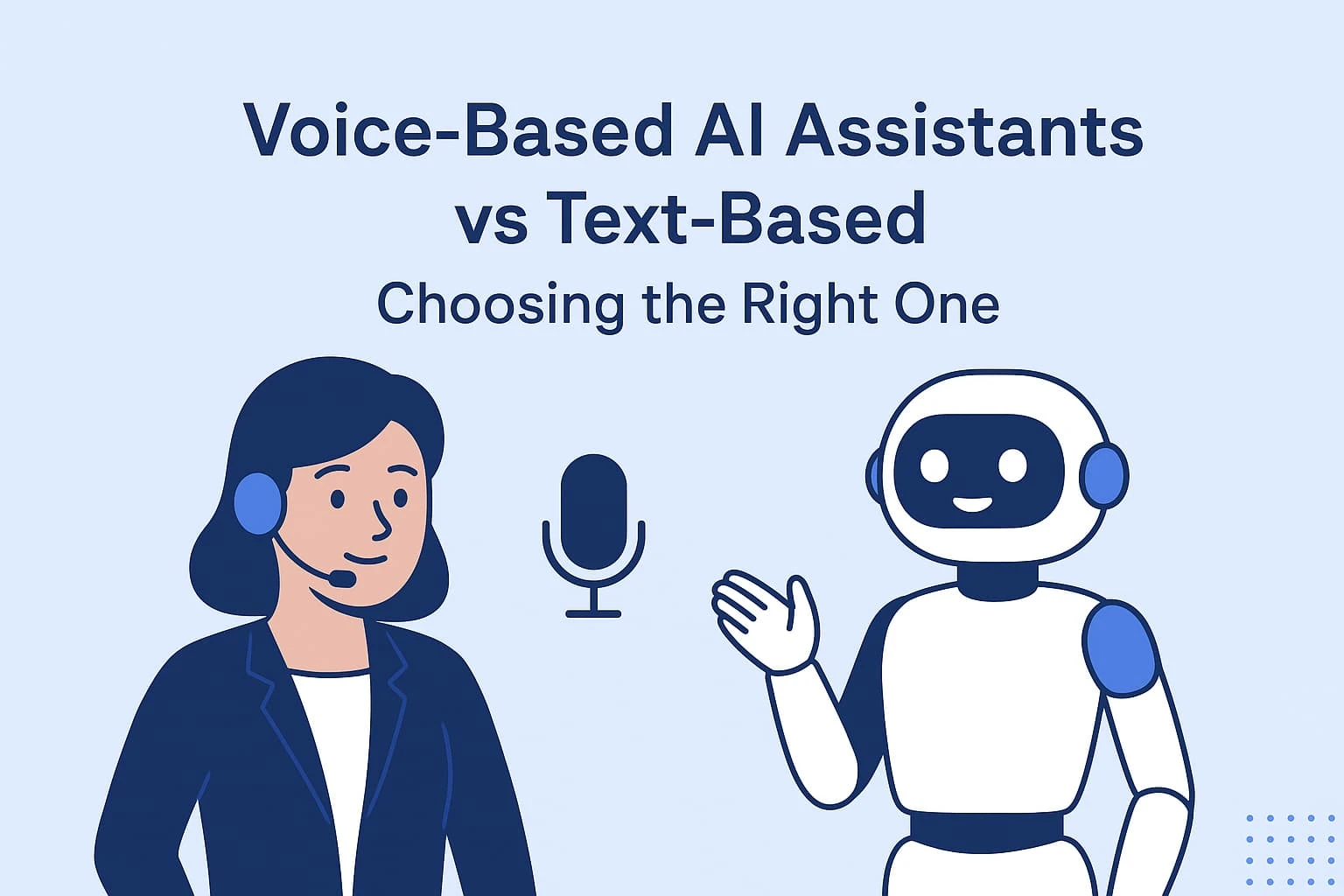
Voice-Based AI Assistants vs Text-Based: Choosing the Right One
Explore the key differences between voice-based and text-based AI assistants. Learn their pros, cons, and best use cases to pick the right one for your business.
As AI assistants become mainstream, businesses face an important question: Should we use voice-based AI assistants or text-based AI assistants?
Both formats have unique strengths—and the right choice depends on your customers, workflows, and business goals. In this blog, we’ll compare voice vs text AI assistants, explore their pros and cons, and help you decide which one is right for your needs.
What Are Voice-Based AI Assistants?
Voice-based AI assistants use speech recognition and natural language processing (NLP) to interact with users through spoken conversations.
Examples: Alexa, Google Assistant, Siri, Brainey AI Voice Agent.
✅ Advantages:
- Natural, hands-free interaction
- Faster for simple queries and commands
- Great for accessibility (visually impaired users)
- Works well in real-time support (customer calls, IVR systems)
⚠️ Limitations:
- May struggle with accents/noise
- Privacy concerns in public spaces
- Not always suited for complex or technical interactions
What Are Text-Based AI Assistants?
Text-based AI assistants communicate via written chat—through web apps, messaging platforms, or customer support widgets.
Examples: ChatGPT, Intercom bots, WhatsApp AI assistants.
✅ Advantages:
- Clear record of conversations
- Easy for complex, detailed queries
- Users can multitask (type while working)
- Popular for customer support, FAQs, and lead qualification
⚠️ Limitations:
- Slower than speaking for short queries
- Less convenient for hands-free situations
- Engagement can feel less “human” than voice
Key Differences Between Voice and Text AI Assistants
When to Choose Voice-Based AI Assistants
Go for voice-based AI assistants if you:
- Run customer service call centers
- Serve industries like healthcare, travel, hospitality (where real-time help is critical)
- Want to offer natural, human-like interactions
- Need solutions for accessibility
When to Choose Text-Based AI Assistants
Choose text-based AI assistants if you:
- Handle detailed customer queries
- Need written records for compliance or auditing
- Run e-commerce or SaaS platforms with chat-first support
- Target younger, digital-native audiences who prefer messaging
The Hybrid Approach: Best of Both Worlds
In many cases, the answer isn’t voice OR text—it’s voice AND text. Businesses can deploy:
- Voice AI for calls & real-time help
- Text AI for chat support & complex queries
This hybrid strategy ensures customers can interact on their preferred channel, improving satisfaction and efficiency.
Conclusion
Both voice-based and text-based AI assistants are powerful—but the right choice depends on your business needs.
- Choose voice-based for speed, natural conversations, and accessibility.
- Choose text-based for detailed interactions, multitasking, and record-keeping.
- Or, adopt a hybrid model for maximum flexibility.
👉 Looking to deploy the right AI assistant for your business? Explore how Brainey AI Voice Agents can transform your customer experience.